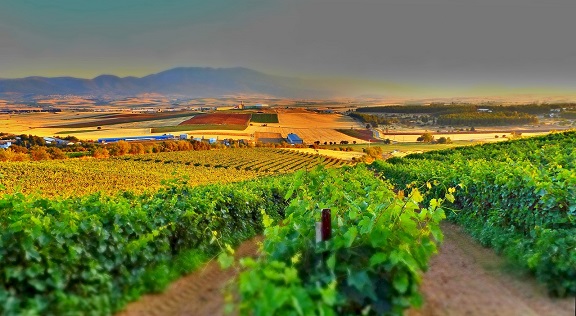
If you picture a fairytale version of Germany, chances are you’re imagining the Rhine Valley. Here, steep vineyards rise behind half-timbered houses, castles overlook slow-moving riverboats, and every cobblestone seems to whisper a legend. But beyond the storybook scenery lies one of Europe’s oldest and most celebrated wine regions – a place where history, culture, and Riesling flow as abundantly as the Rhine itself.
This article is your immersive guide to exploring the Rhine Valley’s wine culture – from must-visit towns and castles to local wine styles and travel tips. Whether you’re planning a weekend wine tour or a longer stay along Germany’s most romantic river, here’s everything you need to sip, stroll, and savor the Rhine.
The Rhine Valley Wine Route: A Landscape Carved by Time
The Upper Middle Rhine Valley – a UNESCO World Heritage Site – stretches roughly 65 kilometers between the towns of Bingen and Koblenz. This corridor is dense with vineyards, castles, and centuries of winemaking tradition. Steep slopes along the river maximize sun exposure for grape ripening, especially for Riesling, the region’s most celebrated varietal.
The Rhine has served as a vital trade route since Roman times. As such, it’s not just the backbone of local viticulture – it’s a cultural artery that has influenced poetry, painting, and German identity itself.
Top Wine Towns to Explore
- Rüdesheim am Rhein: A popular entry point to the region, known for its wine taverns, the Drosselgasse alley, and the scenic Niederwald Monument. Don’t miss a visit to the Brömer winery or a Riesling tasting at Weingut Georg Breuer.
- Bacharach: Perhaps the most picturesque of all Rhine towns, Bacharach is beloved for its Gothic churches, ivy-covered walls, and welcoming family-run wineries. Try wines at Toni Jost or stroll to nearby Burg Stahleck for panoramic views.
- Oberwesel: Known as the “City of Towers,” this lesser-known gem has excellent Rieslings, quiet medieval charm, and easy hiking access to vineyards.
- Boppard: A slightly larger town that offers riverfront promenades, Roman ruins, and chairlift access to stunning vineyard views. Stop at Weingut Walter Perll for a local tasting.
Don’t-Miss Castles Along the Rhine
Part of the Rhine’s magic lies in its incredible density of castles – over 40 between Mainz and Koblenz alone. Many were built by feudal lords to collect tolls and flaunt their power. Today, they’re iconic landmarks that combine medieval drama with wine-soaked romance.
- Marksburg Castle (near Braubach): The only hilltop castle on the Rhine never destroyed, offering authentic medieval interiors and sweeping views.
- Rheinstein Castle: Restored in the 19th century with neo-Gothic flair, this fairy-tale fortress features a romantic chapel and wine terrace.
- Stolzenfels Castle: A Prussian royal residence south of Koblenz, ideal for architecture lovers.
Riesling Reigns Supreme
The Rhine Valley is synonymous with Riesling. These wines are highly expressive, ranging from bone-dry (“Trocken”) to lusciously sweet late harvests (“Spätlese,” “Auslese”). Expect vibrant acidity, notes of peach and lime, and a distinctive minerality from the slate soils.
Other grapes grown in the area include:
- Spätburgunder (Pinot Noir): Especially in the warmer parts of the valley like Assmannshausen.
- Silvaner: A mild, food-friendly white that complements local cuisine.
Where to Taste: Wineries and Straußwirtschaften
- Weingut Schloss Vollrads (near Oestrich-Winkel): One of the oldest wine estates in the world.
- Weingut Leitz (Rüdesheim): Internationally respected and known for terroir-driven Rieslings.
- Straußwirtschaften: These seasonal wine taverns, run by vintners, offer simple meals and their latest wines. Look for signs marked “Straußwirtschaft” or “Gutsschänke.”
Pair Your Wine With Local Flavors
Rhine Valley cuisine is hearty and rustic, perfect for wine pairing. Classic dishes include:
- Sauerbraten (marinated pot roast)
- Zwiebelkuchen (onion tart)
- Spundekäs (spicy cheese spread served with pretzels)
Travel Tips for Wine Lovers
- Getting There: Fly into Frankfurt, then take a train or rent a car.
- Getting Around: Trains run regularly along both riverbanks, but a car offers more access to vineyards and guesthouses.
- River Cruises: Short cruises between towns offer relaxing views of castles and cliffs.
- Hiking & Biking: Trails like the Rheinsteig or Rheinhöhenweg provide active ways to see the region.
When to Go
- May to October is ideal, with warm weather and festivals.
- September and October are peak harvest months – perfect for wine fests and golden vineyard views.
Annual Wine Events to Watch For
- Rüdesheimer Weinfest (August)
- Bacharach Wine Market (Autumn weekends)
- Mittelrhein Weinfrühling (Spring wine tastings across the region)
Stay in Style
For the full wine country experience, book:
- Weingut stays (many vineyards offer cozy guest rooms)
- Historic inns in towns like Bacharach or Lorch
- River-view hotels for scenic relaxation after a tasting day
This article is part of our in-depth guide to Germany’s wine culture. For more insights, don’t miss:
- Germany’s Wine Regions: A Traveler’s Guide to Rhine and Mosel Valleys
- Mosel Magic: Germany’s Most Scenic River for White Wine Lovers
- German Wine 101: Grape Varieties, Label Terms, and What to Drink
- When to Visit German Wine Country: Seasons, Festivals, and Travel Tips
- Wine Tourism in Germany: How to Taste Like a Local and Explore With Style
- Wine Festivals in Germany: Learn about the vibrant wine culture of the Rhineland.
Raise your glass to Riesling and river views – the Rhine Valley is calling.

